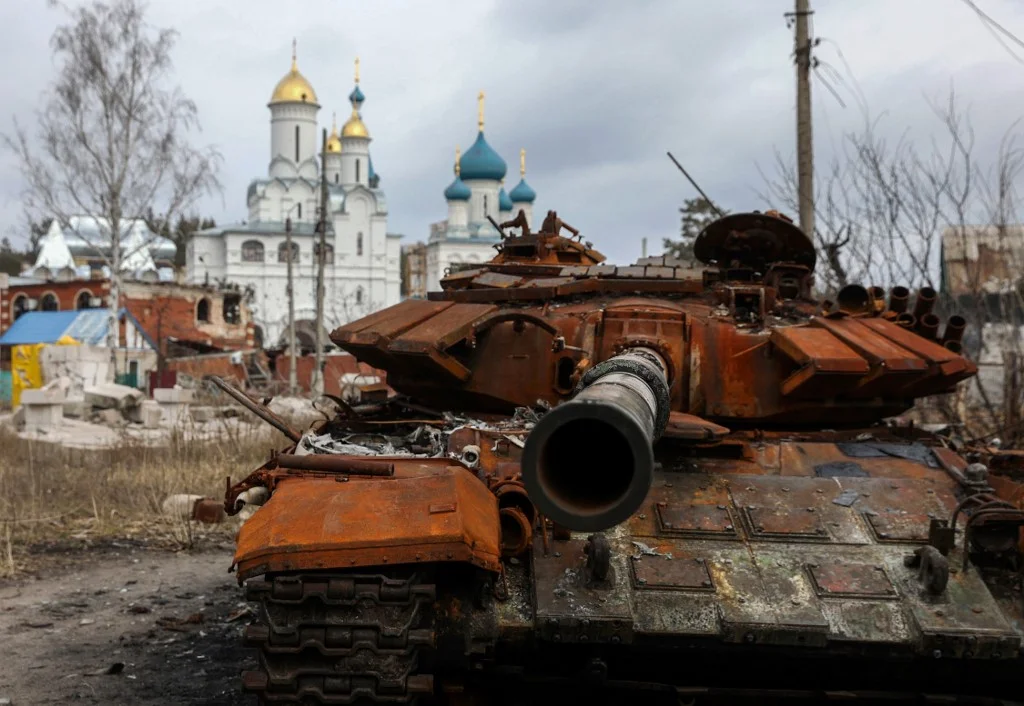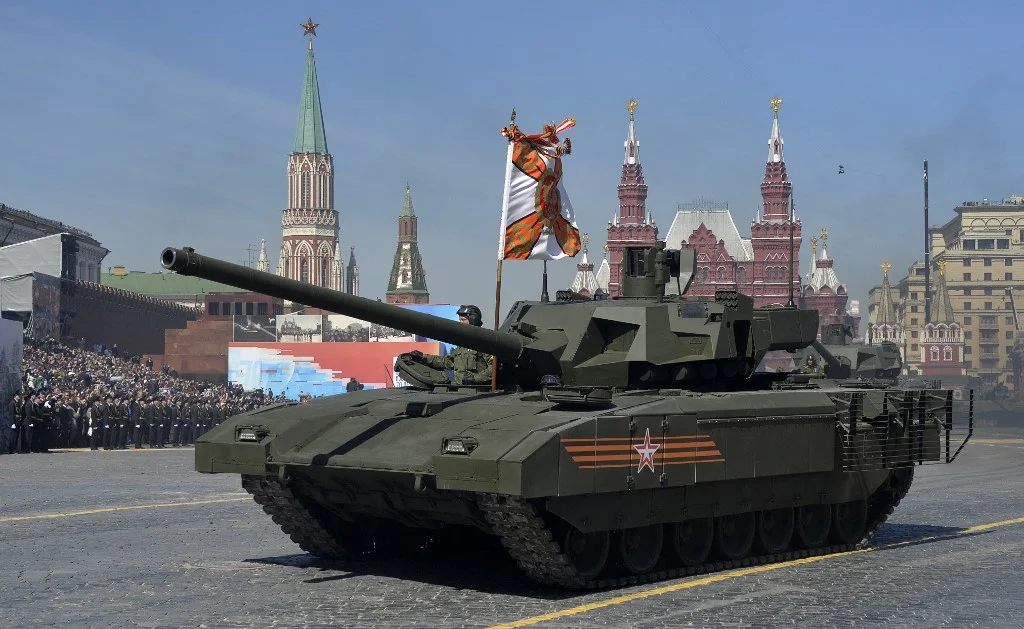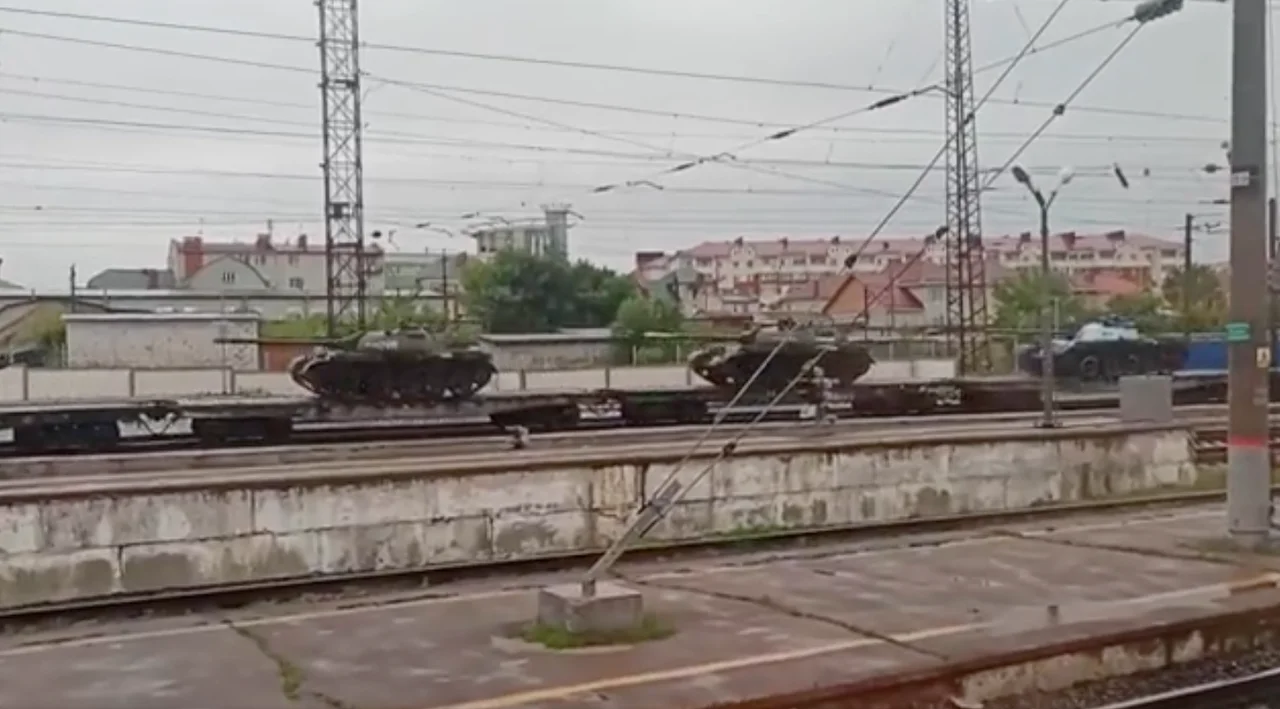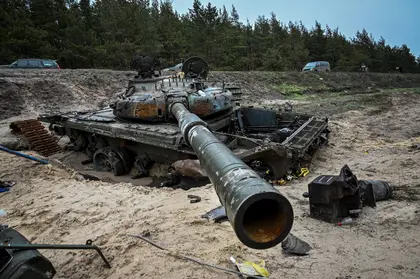New data suggests Ukraine could have more battle-ready tanks than Russia for the first time since the start of Moscow’s full-scale invasion.
Kyiv’s supply of tanks has steadily increased over the past year as its western allies pledge more and more weaponry, while the Kremlin has taken heavy losses and faces major obstacles in replenishing its supplies.
Which begs the questions, how many tanks does Russia actually have, how many are likely to be deployed to Ukraine and particularly, after a year of fighting a very capable AFU, how many tanks does Russia actually have left in Ukraine?
Russian tank losses
According to the latest data, Ukraine currently has around 1,400 active tanks compared to Russia’s 1,300.
Military analysts and armchair generals watching the conflict generally agreed that in February 2022 Russia had about 3,400 main battle tanks of late Cold War or early 2000s vintage at its disposal and battle-ready, with somewhere between 8,000 and 10,000 in storage.
In stark contrast, Ukraine only had 987, according to The Military Balance for 2023.
Since February 2022, Ukraine and Russia have faced very different realities when it comes to weaponry.
Ukraine has received 471 additional tanks with a further 286 due to arrive, according to data published by the Kiel Institute for the World Economy, mostly Germany’s Leopard 2 tank as well as smaller numbers of the US-made M1A3 Abrams and British Challenger 2.
The Dutch military analytical group Oryx, estimates Ukraine has lost 560 tanks but has captured almost as many Russian tanks – 544.

French Policy Playing Into Iranian and Russian Hands
This gives a current total of 1,442 not including the 286 still due to arrive.
Russia’s situation is far bleaker. According to Oryx, of the 3,400 tanks Russia began the full-scale invasion with, at least 2,098 tanks lost to all causes.
Allowing for Russia’s limited tank production capability which has been hit hard by western sanctions and the general economic situation, this gives somewhere in the region of a current total of 1,400.
The figures should be treated with a degree of caution – the numbers from Oryx likely underestimate losses on both sides as they only use independently-confirmed information, usually open-source photographs of a destroyed or captured Russian tank, to register a loss.

A destroyed Russian tank is photographed in the town of Svyatogirsk, Donetsk region on March 1. PHOTO: AFP.
Meanwhile, there are no reliable sources for the numbers of new tanks built by Russia, nor how many they have brought out of storage. The actual number of Russian tank losses in Ukraine is a Kremlin military secret, as is Russian industry’s capacity to replace them.
But the latest data on Russian tank numbers roughly tally with recent comments made by the UK’s Chief of the Defense Staff, Tony Radakin, earlier this week who told the British parliament that Moscow “has lost nearly half the combat effectiveness of its army.”
He added: “Last year it fired 10 million artillery shells but at best can produce 1 million shells a year. It has lost 2,500 tanks and at best can produce 200 tanks a year.”
Ukrainian sources put the number of Russian losses far higher – Ukraine’s Army General Staff (AGS) per its July 7 morning situation estimate reported AFU units have to date claimed they knocked out, destroyed or captured 4,078 Russian main battle tanks since the start of the war – more tanks than the entire active duty Russian army had operational at the start of 2022.
‘World-Beating’ T-14 Armata Tank
Russian media in April claimed Moscow had deployed its cutting-edge T-14 Armata tank to fighting in Ukraine, against a background of skepticism the weapons system would reach the field, and, according to some Kremlin critics, ever be combat capable.
Billed as Russia’s answer to the US-made M1A3 Abrams, British Challenger 2, and Germany’s Leopard 2 tank, Moscow’s T-14 Armata is equipped, according to an RIA report, with a remote-controlled turret, enhanced crew protection, composite ceramic-and-steel layered armor, explosive reactive armor blocks, and a sensor-activated defense system that automatically launches interceptor charges to defeat incoming missiles and anti-tank shells.
The Armata’s 125mm cannon can fire missiles and is capable of accurate fire out to eight kilometers, the article claimed.

A Russian T 14 Armata tank rides through Red Square in Moscow, on May 7, 2015. PHOTO: AFP
A weapon in development since the mid-2000s, and in recent years prominently profiled in Red Army parades as evidence of growing Russian military power, the Armata has become to some Kremlin critics a symbol of an inefficient Russian army leadership focused on media images rather than real combat capacity.
Regardless of its supposed firepower, the T-14 Armata has yet to have any significant impact in Ukraine.
Museum Piece T-54/55s
But what about the tens of thousands of tanks Russia has in storage? While the numbers may sound impressive, the tanks themselves are not.
On numerous occasions over the last few months, videos posted to social media have shown train-loads of obsolete tanks, some dating from World War 2, heading into Ukraine.
The latest such incident saw Russian army T-54/55 tanks spotted in the Voronezh region, on their way to Russian-occupied Crimea.
“They’re ancient, like mammoth poo,” someone can be heard saying on the film.
"They are ancient like mammoth's poo", - says a man on the background. T-55 is indeed not a modern model, as it was introduced by the Soviet Army as its MBT in 1958, and was just an upgrade of T-54, created in... 1946. pic.twitter.com/HZcLsyq6SB
— Sergej Sumlenny, LL.M (@sumlenny) July 4, 2023
Commercial satellite imagery, produced by Maxar Technologies, from as early as the summer of 2022 continuing into the autumn, showed the movement of old T-62 tanks from storage at Russia’s 1295th Central Tank Reserve and Storage Base in, Prymorskyi Krai region.
Then, in March 2022, footage began to appear on social media of the even older T-54 and T-55 tanks being transported by rail from the Arsenyev base, which raised widespread speculation that these armored vehicles, which were built in the 1960s, were also being deployed to the Ukrainian front.
Experts initially presumed that these tanks would then be modernized and upgraded before being sent to the frontlines.
However, the T-54/55s seen in Ukraine appear to have received no enhancements and have been deployed in the same condition as when they were placed in storage. They appear to lack any of the protective features seen on some of the enhanced variants of the 1990s, or even the 1980s.

Instead, the T54/T55s may prove more useful as static gun emplacements as Russia has sought to increase its defensive line in the face of Ukraine’s summer offensive.
The tank could be dug in so that only its turret can be seen above ground to defend a front line against counterattacks. Another use could be as an additional artillery system, to provide indirect fire support to mobile Russian forces, operating from one ‘tactical bound’ behind advancing troops.
It is also likely that, as they run low on conventional artillery ammunition, Russian forces may have stocks of the 100mm ammunition used by the tank which includes high explosive-fragmentation, as well as anti-tank rounds.
You can also highlight the text and press Ctrl + Enter






